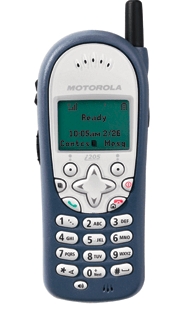Mobile Phone in California


Just bought a new, polished-black shell for my relatively ancient (by Japanese standards, which I've become rather fond of over the past 7-8 years) Motorola i205 at a stall at the Burbank Media Center.
This returning to the simpler designs of the old rotary-dial days actually is part of my conscious decision to focus more of life and work toward simplicity over clutter, practicality over fanciful design that serves nothing other than an aesthetic purpose.
The i205 may not be nearly as sexy as, say, Makoto Saito's AU KDDI Design Project: Penck; cell phone technology and design simply aren't areas where the U.S. can boast any sort of competitive edge over Japan. But then again, unlike the Oyayubi Sadai (the "thumb generation"), I don't need all the sophisticated messaging functions out here in California (mainly because no one else I know uses these functions).
I do dread the day when I need to make the switch over to the Blackberry. Nothing like another device to help me increase my productivity:
The idea that gadgets always make us more efficient "is a scam, an illusion," says David Greenfield, director of the Hartford-based Center for Internet Studies. That's because at their heart, gadgets enable multitasking.
And a growing body of evidence suggests that multitasking can easily turn into multislacking. It also increases errors, short-circuits attention spans, induces air-traffic-controller-like stress, and elongates the time it takes to accomplish the most basic tasks by up to 50% or more, according to University of Michigan psychology professor David Meyer.



0 Comments:
Post a Comment
<< Home